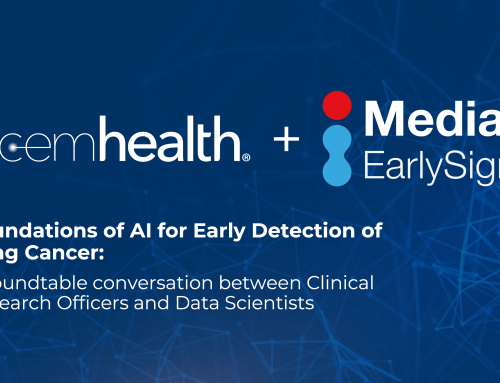
How AI Can Help Prevent Hospitalizations by Detecting Diseases Early
At Lucem Health, we are passionate about improving the health and well-being of people around the world. One of the ways we can do that is by using AI-enabled solutions to detect diseases early and provide proactive outpatient treatment, before they become serious enough to require hospitalization.
Hospitalizations are not only costly and stressful for patients and their families, but also pose a risk of complications, infections, and adverse events. Many hospitalizations are avoidable if the underlying conditions are diagnosed and managed in a timely manner.
Preventing Hospitalizations Requires Preventive Treatment
In the past few months, my colleagues and I have had a striking number of similar conversations with hospital system leaders. They all go something like this:
Us: “What’s your biggest challenge right now?”
Clinical leader: “We face this cruel paradox – we are swamped with patients and our beds are full. And yet we are losing money. Too many admissions are avoidable, but we are having trouble getting preventive treatment to those patients.”
This is a moment for population health teams to apply tools that enable proactive patient intervention. AI-enabled solutions supercharge population health efforts, identifying patterns and signals that indicate a higher risk of certain diseases. By targeting flagged patients for timely intervention, we reduce avoidable admits (and improve patient outcomes).
Examples: Early Disease Detection for More Proactive Care
Diabetes
Diabetes can lead to serious complications, such as kidney failure, nerve damage, blindness, and heart disease. According to the CDC, more than 34 million Americans have diabetes, and over 20% are undiagnosed. [1] AI can help detect undiagnosed diabetes risk early by analyzing patients’ EHR data. Through proactive treatment, providers will reduce complications that lead to hospitalization.
Stroke
Ischemic stroke occurs when a blood clot blocks a blood vessel in the brain, depriving it of oxygen and nutrients. According to the American Stroke Association, stroke is the fifth leading cause of death and the leading cause of disability in the United States. [2] AI can help prevent ischemic stroke by reviewing ECGs for uncharted atrial fibrillation, a common heart rhythm disorder that increases the risk of blood clots. By linking corresponding risk factors, such as high blood pressure, you can focus on patients with demonstrably higher stroke risk. And the best part? For most patients, treatment is as simple as an anticoagulant, and is about 70% effective at preventing related strokes.
Flu Complications
For certain patients, seasonal flu leads to serious complications that require hospitalization. Consider pneumonia or bronchitis, for example. According to the CDC, flu causes up to 810,000 hospitalizations and 61,000 deaths in the United States each year. [3] AI-enabled solutions can flag patients with higher flu complications risk. By putting extra focus on flu vaccination for those patients, hospitalizations can be cut by as much as 30%.
Heart Failure
Heart failure occurs when the heart cannot pump enough blood to meet the body’s needs. According to the American Heart Association, heart failure affects about 6.2 million Americans, and is a leading cause of hospitalization among adults over 65. [4] AI can analyze ECGs and echocardiograms to help detect heart failure early, when outpatient treatments have demonstrated success at preventing admissions.
These are just some examples of how AI can help prevent hospitalizations. Perhaps the most compelling population health solution to the “cruel paradox” noted above? Proactive outpatient treatment.
By targeting patients with higher statistical risk of disease, we realize better clinical outcomes at lower cost.
Curious to see how these AI early disease detection solutions work? Learn more about Lucem Health Reveal or contact us!
